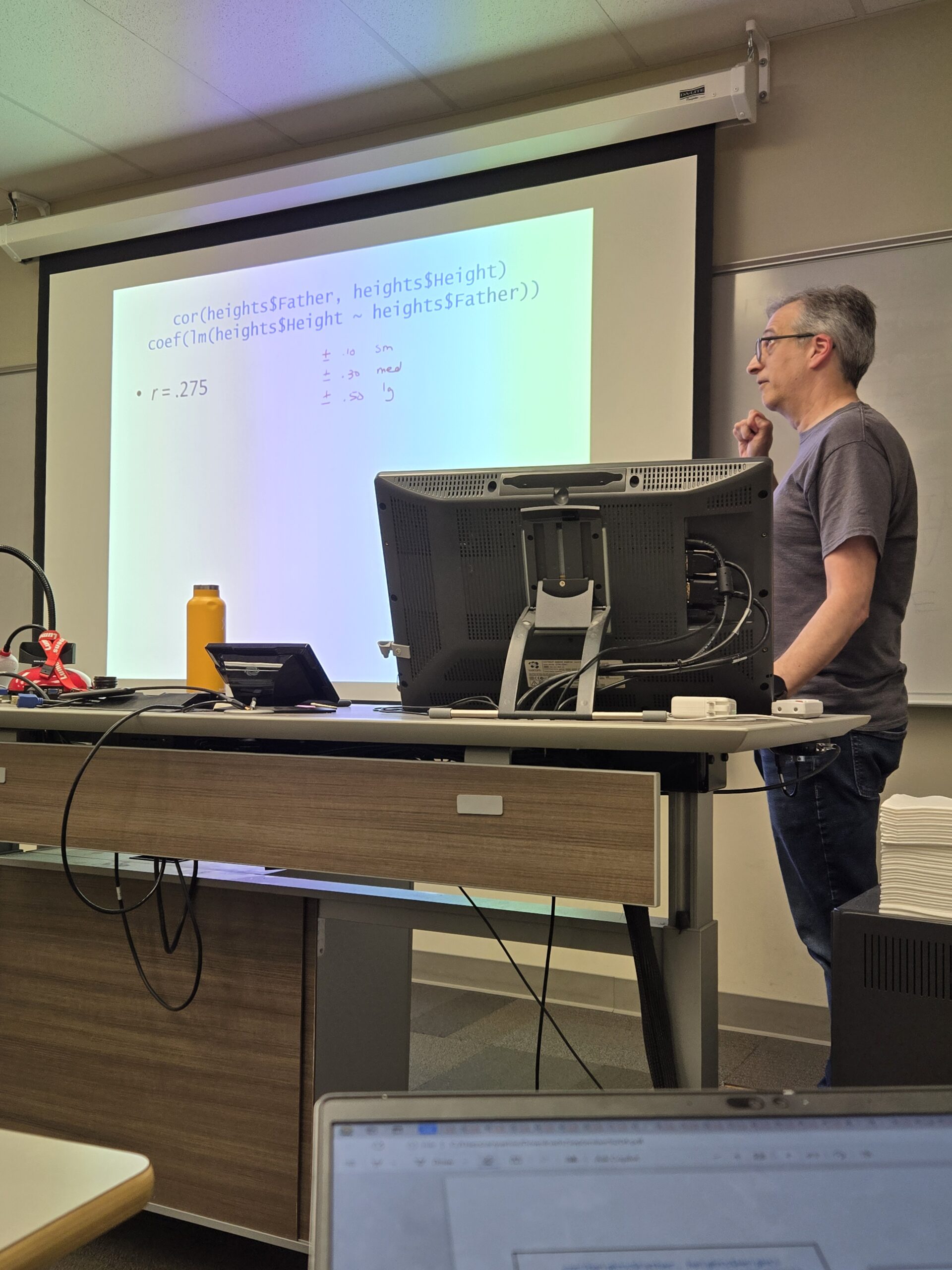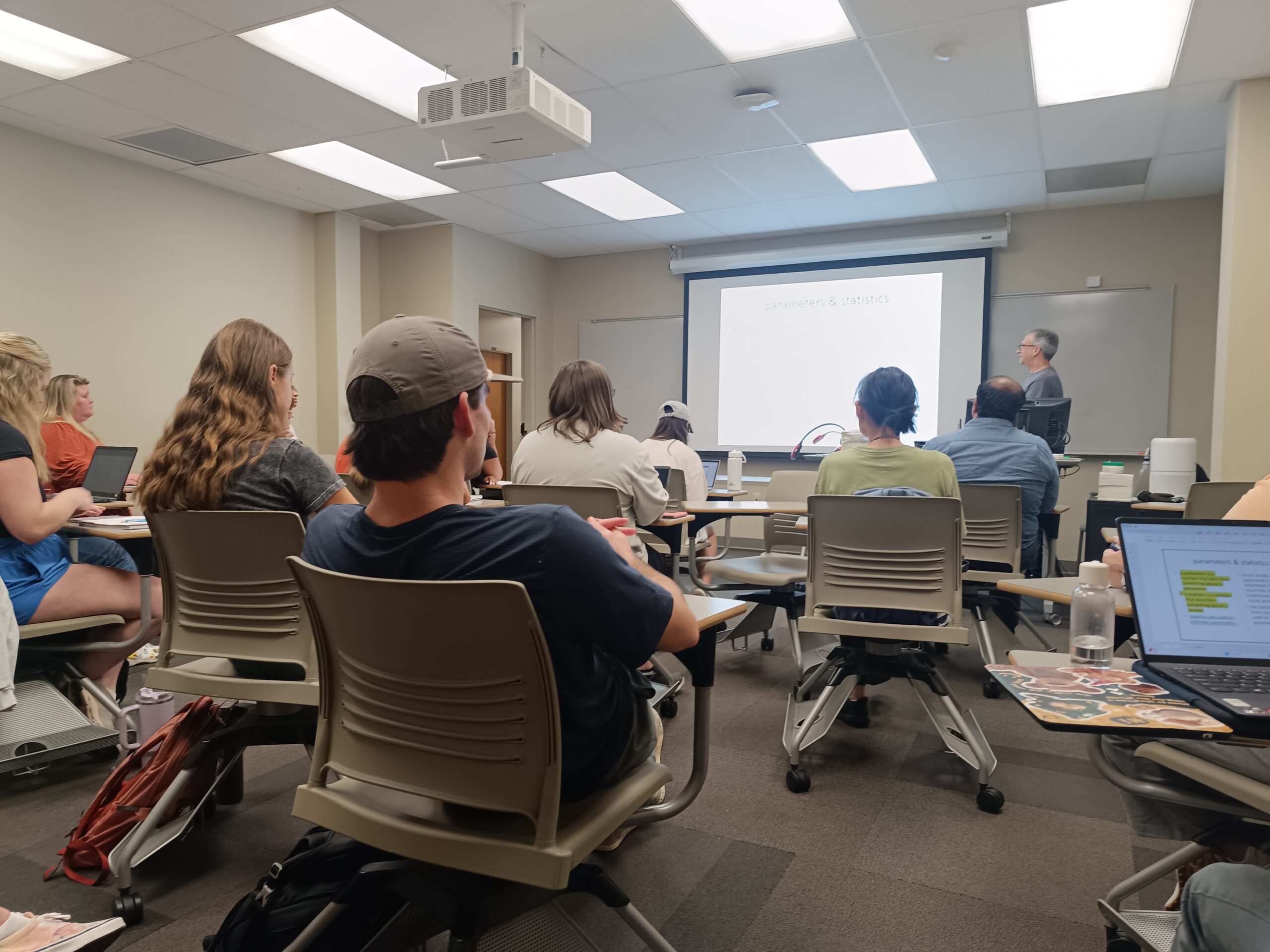
Setting Working Directory
setwd('/Users/YourNameHere/Desktop')This line sets the working directory (the default folder where R will look for files and save outputs) to the Desktop folder of the user.
Basic Functions
The code introduces several basic R functions:
sqrt(): Calculates the square root of a valueseq(): Generates a sequence of numbersremove()orrm(): Removes an object from the R environmentgetwd(): Shows the current working directorysetwd(): Sets a new working directorydir(): Lists files in the current directory
Creating and Manipulating Sequences
y <- seq(from = 1, to = 20, by = 1)This creates a sequence of numbers from 1 to 20, counting by 1, and assigns it to the variable y.
head(y)
head(y, n = 10)
tail(y)These functions show the first (head) or last (tail) elements of y. By default, head shows 6 elements, but you can specify a different number.
Basic Statistics
mean(y)
median(y)
sd(y)
var(y)
length(y)These calculate various statistics for y: mean, median, standard deviation, variance, and the number of elements.
Arithmetic Functions
sum(y)
round(5.76)
log(10)These perform basic arithmetic operations: sum of all elements in y, rounding a number, and calculating the natural logarithm.
Function Nesting and Piping
round(sd(y))
sd(y) %>% round()These show two ways to perform the same operation: calculating the standard deviation of y and then rounding it. The second line uses the pipe operator %>% from the tidyverse package.
Loading Packages
library(tidyverse)This loads the tidyverse package, which includes several useful R packages for data manipulation and visualization.
Working with Data Files
heights <- read.table("https://ytliu0.github.io/Stat390EF-R-Independent-Study-archive/RMarkdownExercises/Galton.txt",
header = T,
stringsAsFactors = TRUE)This reads a data file from the internet and stores it in a data frame called heights.
Exploring Data
head(heights)
glimpse(heights)
colnames(heights)
str(heights)These functions help explore the structure and content of the heights data frame.
Accessing Data in Data Frames
heights$Height
heights %>% select(Height)
heights[2, 5]
heights[1:5, "Height"]These show different ways to access specific parts of the data frame.
Basic Data Analysis
mean(heights$Height)
cor(heights$Mother, heights$Father)These perform basic statistical analyses on the data.
Basic Plotting
hist(heights$Height)
boxplot(heights$Height)
qqnorm(heights$Height)
plot(heights$Father, heights$Height)These create various types of plots using base R plotting functions.
Advanced Plotting with ggplot2
ggplot(heights, aes(Mother, Father)) +
geom_point(position = "jitter") +
theme_classic()This creates a scatter plot using ggplot2, a more advanced plotting package that’s part of tidyverse. It plots Mother’s height against Father’s height, adds jitter to the points, and applies a classic theme to the plot.
This code provides a comprehensive introduction to basic R operations, data manipulation, and visualization techniques.










Leave a Reply